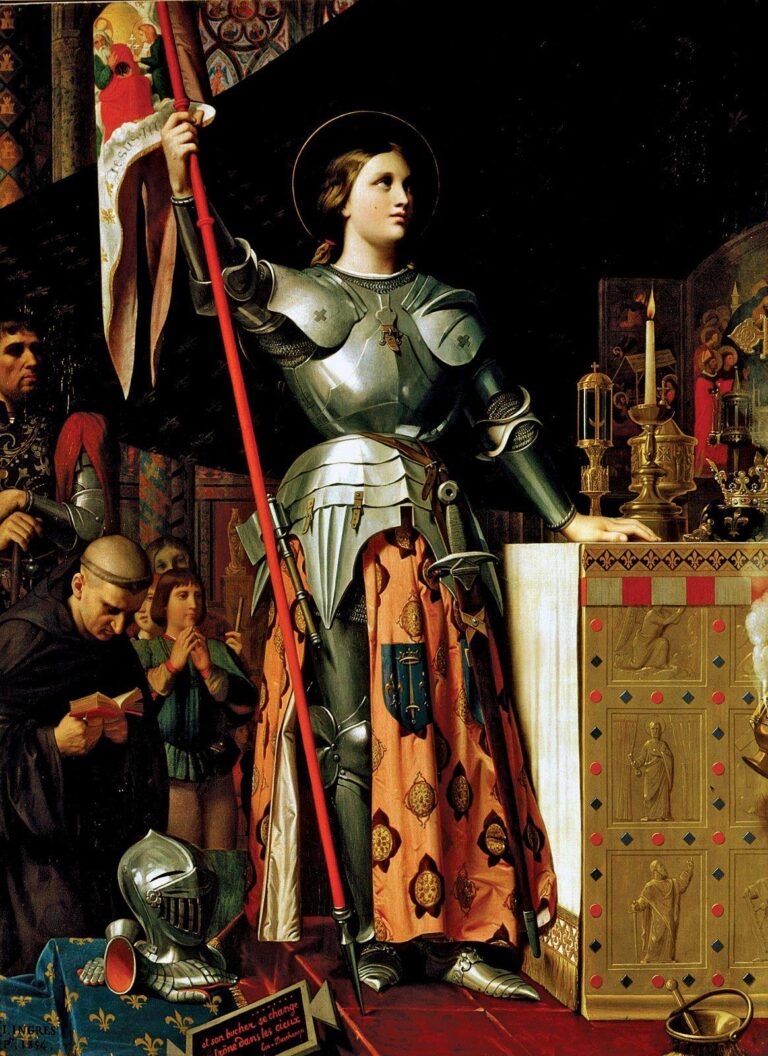Joan of Arc: The Icon of Courage and Conviction
In the annals of history, few figures resonate as powerfully as Joan of Arc, a young peasant girl who rose to become a symbol of national pride, faith, and tenacity. Born in the late 15th century in rural France, her journey from the confines of her modest upbringing to the battlefield as a leading military commander during the Hundred Years’ War is nothing short of extraordinary. As the world marks significant milestones in her legacy, this article delves into the life and accomplishments of Joan of Arc, highlighting her pivotal role in shaping French history, the artistic portrayals that immortalize her spirit, and the tragic circumstances surrounding her death. Join us as we explore the enduring impact of this remarkable figure through a comprehensive overview sourced from Britannica, illuminating the trials, triumphs, and profound truths of Joan of Arc’s life.
Joan of Arc: A Heroine’s Journey Through History
Joan of Arc’s remarkable journey from a humble peasant girl to a national symbol of France is a testament to her unwavering conviction and extraordinary bravery. At just 17, she led the French army to pivotal victories during the Hundred Years’ War, most notably the Siege of OrlĂ©ans. Her influence was not just military; she galvanized a nation, inspiring her compatriots to rally against the English occupation. The fervor and determination she displayed were fueled by her profound belief that she was chosen by divine guidance, a conviction that propelled her into the ranks of history’s most iconic figures.
Following her capture by the Burgundians, Joan faced a politically charged trial that ultimately led to her execution in 1431. Despite the tragic end of her life, her legacy endured, solidified through various tributes, including artworks and posthumous canonization by the Catholic Church. Joan’s story transcends her era, representing themes of courage, faith, and national identity. The following table encapsulates key facets of her life and impact:
| Aspect | Details |
|---|---|
| Date of Birth | c. 1412 |
| Major Accomplishment | Victory at Orléans |
| Trial and Execution | 1431, Rouen |
| Canonization | 1920 |
Exploring the Artistic Representations of Joan of Arc
Throughout history, Joan of Arc has inspired countless artists, becoming a symbol of courage and faith. From medieval tapestries to modern sculptures, the artistic representations of this iconic figure reflect not only her valor but also the evolving perceptions of femininity and nationalism. Key artists who have captured her essence include:
- Jules Bastien-Lepage – His painting “Joan of Arc” portrays her as a youthful, resilient warrior, emphasizing her connection to the divine.
- Gustave Moreau – Known for his mystical interpretations, Moreau’s works often depict Joan in ethereal, almost surreal landscapes.
- Robert Lepage – In contemporary theater, Lepage’s stage creations bring a dynamic and multi-dimensional view of Joan’s life and legacy.
Artistic representations also reflect broader cultural narratives and societal norms surrounding Joan of Arc. In depictions ranging from heroic to tragic, artists have utilized various media to convey her numerous traits. For instance, a notable trend can be observed in:
| Medium | Artistic Focus |
|---|---|
| Paintings | Heroism and divinity |
| Sculptures | Strength and resolve |
| Literature | Complexity of her experience |
Ultimately, these diverse portrayals not only highlight Joan’s impact on history but also encourage ongoing dialogue about her significance in modern society, allowing her story to resonate with each new generation. The art surrounding her continues to inspire deep reflection on themes of courage, faith, and the fight for justice.
The Final Moments: Analyzing the Circumstances of Joan’s Death
On May 30, 1431, Joan of Arc faced her tragic end, executed by burning at the stake in Rouen, France. The circumstances surrounding her death were steeped in controversy, fueled by political motivations and religious fervor. Key factors contributing to her demise included:
- A charge of heresy, largely rooted in her claims of divine visions.
- A backdrop of the Hundred Years’ War, where her influence threatened English aspirations in France.
- Political maneuvering by the Burgundian faction, which opposed her and allied with the English.
The trial that led to her execution was equally fraught with irregularities. Among them was the manipulation of legal proceedings by ecclesiastical authorities who aimed to undermine her credibility. The lack of a fair jury and skewed testimonies from witnesses illustrate the extent to which Joan was persecuted. The outcome of the trial can be summarized in the table below:
| Aspect | Details |
|---|---|
| Trial Authority | Ecclesiastical Court |
| Duration | Several months |
| Verdict | Guilty of Heresy |
| Executors | English and Burgundian forces |
Legacy and Impact: Celebrating Joan of Arc’s Enduring Accomplishments
Joan of Arc’s impact transcends her lifetime, cementing her legacy as a symbol of courage and faith. Her leadership during pivotal battles, including the Siege of OrlĂ©ans, not only turned the tide of the Hundred Years’ War but also inspired a nation facing overwhelming odds. Today, she is celebrated not just as a military figure but as an emblem of resilience and empowerment for marginalized voices throughout history. The narrative of her faith-driven mission, her unwavering resolve, and tragic martyrdom has sparked numerous artistic expressions, religious discussions, and sociopolitical movements around the globe.
The recognition of Joan’s contributions has evolved over the centuries, leading to her canonization in 1920 and her designation as a patron saint of France. Her story reverberates through various cultural mediums, from literature to film, shaping collective memory and influencing countless leaders. To understand her legacy, one might consider the following aspects:
- Symbol of National Unity: Joan is viewed as a unifying figure for France, encouraging a sense of national identity.
- Cultural Influence: Her life inspired countless artworks, literature, and performances that continue to resonate.
- Role Model: Joan stands as a historical example of female empowerment and leadership in a male-dominated society.
Furthermore, Joan’s story has fostered ongoing discourse regarding faith, gender roles, and the nature of heroism. Her enduring legacy can be summarized in the following table, highlighting key aspects of her influence:
| Aspect | Impact |
|---|---|
| Military Leadership | Revitalized French morale and military efforts. |
| Religious Symbol | Embodies faith and divine inspiration, recognized as a saint. |
| Women’s Representation | Challenges traditional gender roles, inspiring future generations. |
In Conclusion
In conclusion, Joan of Arc remains a compelling figure whose life and legacy continue to captivate historians and the public alike. From her extraordinary rise as a young peasant girl to her pivotal role in the Hundred Years’ War, Joan’s accomplishments are a testament to her unwavering conviction and bravery. Her story, immortalized in paintings and literature, transcends time, reminding us of the complexities of faith, nationalism, and gender in the face of adversity. As we reflect on her tragic death and subsequent canonization, it’s clear that Joan of Arc is not merely a historical figure but a symbol of courage and resilience whose influence endures in contemporary discussions of leadership and empowerment. As we navigate our own challenges in today’s world, her story invites us to explore the remarkable power of conviction and purpose in shaping history.




